The Maverick Carter House
Introduction
Text-to-speech Audio
Built in 1893, this three-story limestone mansion opened to the public as a museum in 2018. It was originally built for William Harvey Maverick, whose father had been one of the signatories to the Texas Declaration of Independence. In 1914, the property was purchased by H.C. Carter, a prominent San Antonio attorney and former president of the Texas Bar Association. Carter's wife, Aline, had strong interests in music, astronomy, and poetry, and she later became a professional poet, serving as the Poet Laureate of Texas from 1947 to 1949. Aline Carter worked with the artisan Ethel Wilson Harris to convert the home's library into a small chapel with a century-old pump organ. She also added an astronomical observatory onto the roof for viewing the night sky. Aline's original typewriter and piano have been preserved, along with period furniture and other unique features within the home, including a nautical communication system and a bell service. The Maverick Carter House was listed on the National Register of Historic Places in 1998 and designated a Texas Historic Landmark in 2010.
Images
Maverick-Carter House
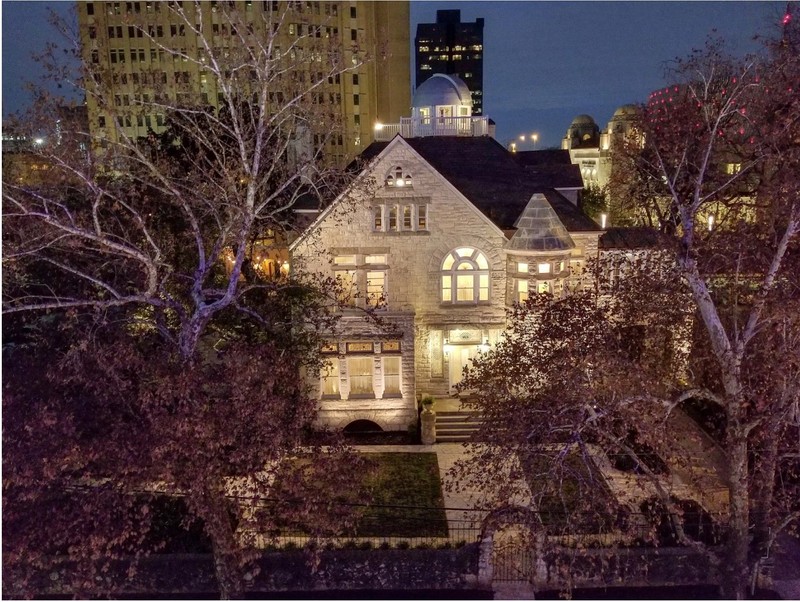
The kitchen
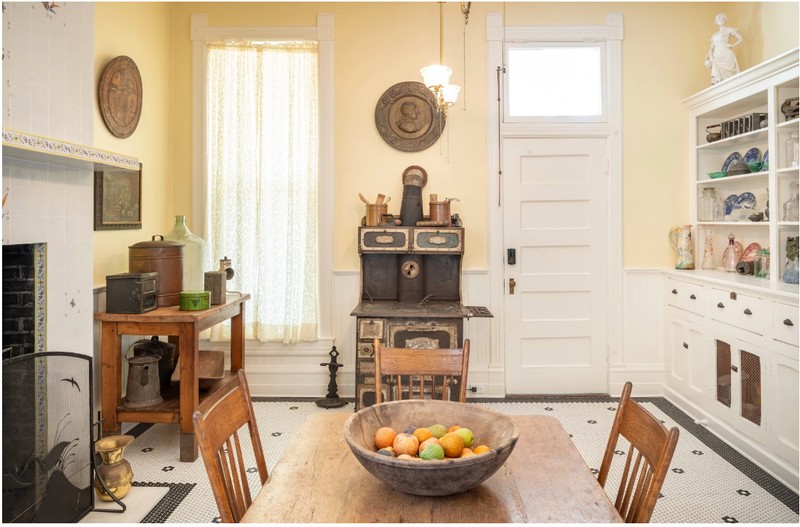
Dining Room
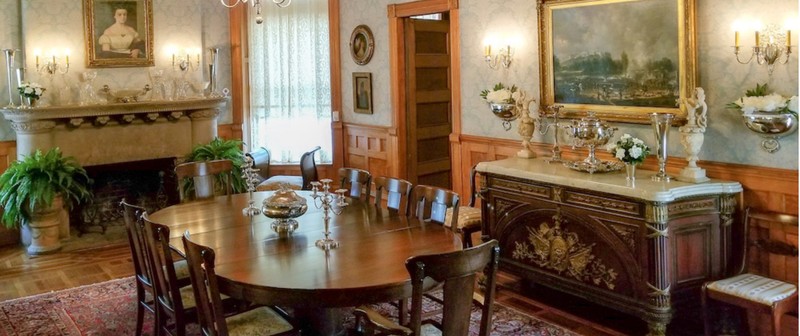
Staircase
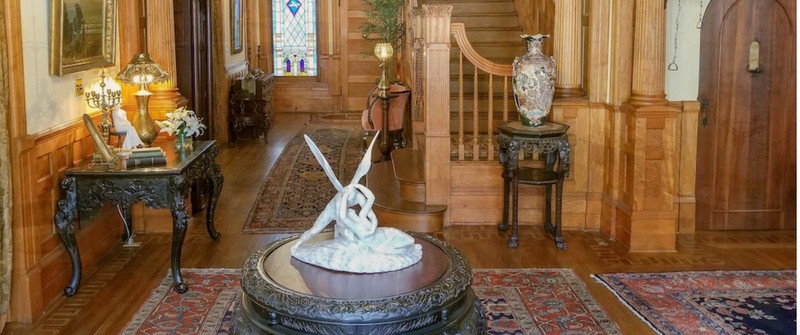
Entrance
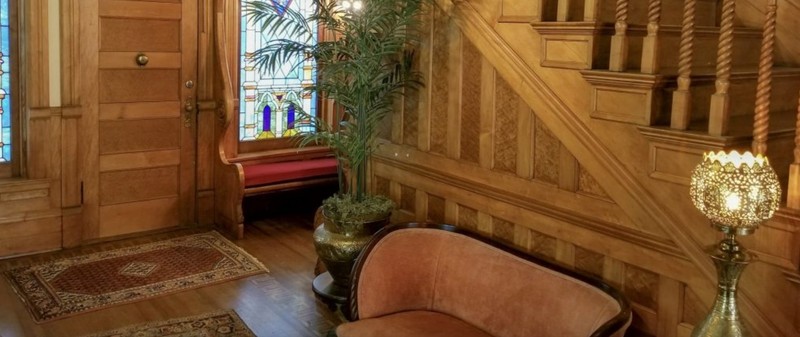
Aline Carter commissioned artisan Ethel Wilson Harris to build a small chapel on the highest natural point of Mustang Island in Port Aransas in the 1930s
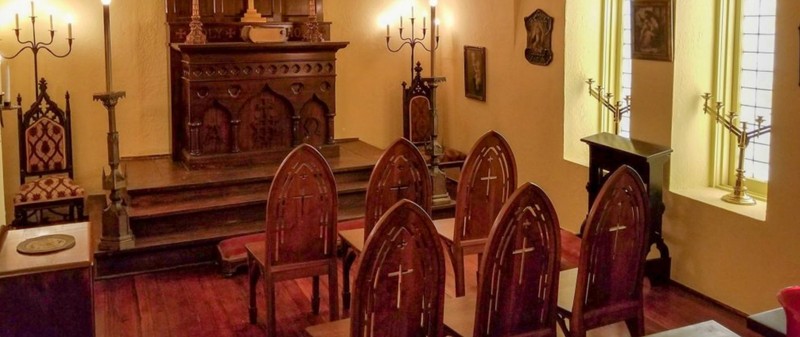
Exterior at night

Aline's grand piano
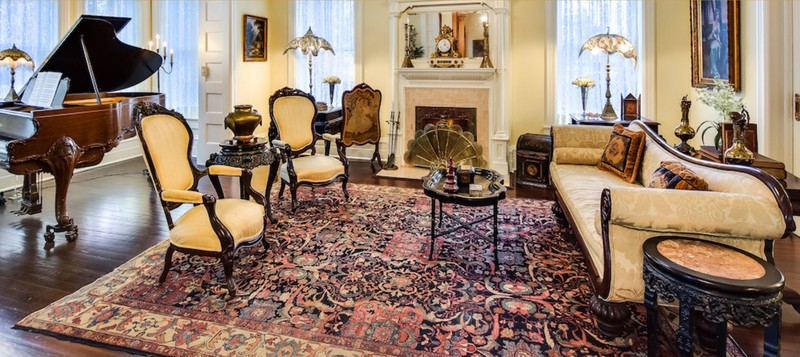
The foyer
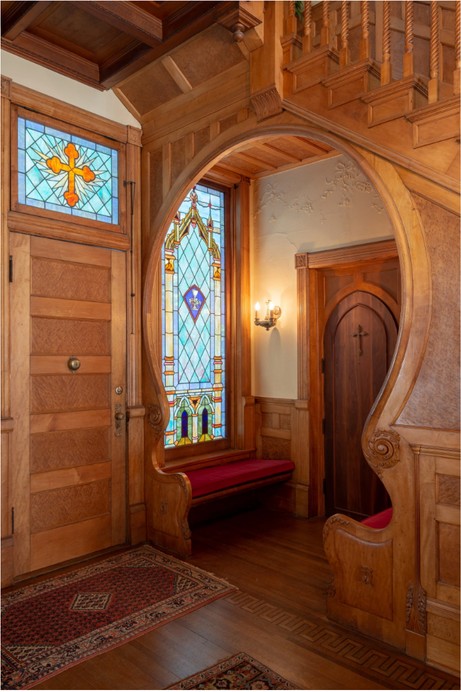
Observatory on the roof
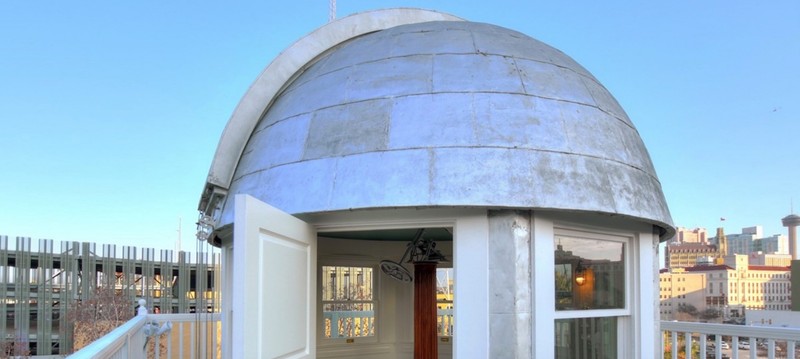
A Poetry Prize for Young Poets in honor of Aline B. Carter, former Poet Laureate of Texas
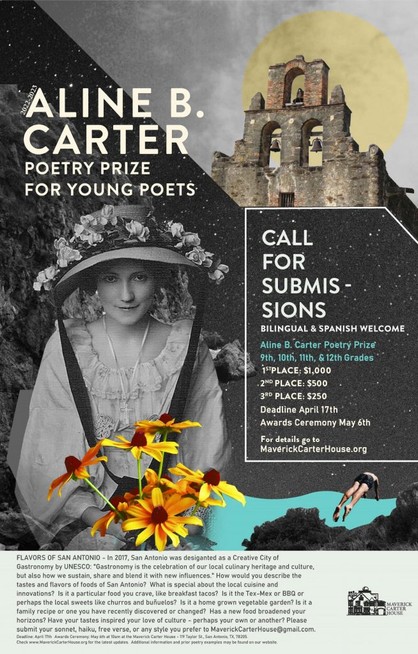
Backstory and Context
Text-to-speech Audio
The Maverick Carter House is named for William Harvey Maverick, who built the home in 1893, and also for the Carter family who purchased it in 1914. The property was first opened to the public as a museum beginning in 2018. Many of the home's historical features have been preserved, including decorative stained-glass windows, maple and oak wainscoting, sandstone mantelpieces, and a wood-paneled nook with bench seats by the front entrance. Along with late nineteenth- and early twentieth-century furniture, the home still has a 'bell service' that connected various rooms to the kitchen to quickly reach the cook or other staff. The property is unusual in that it also has a nautical communication system, which was installed between rooms. Known as 'annunciator boxes,' the system involved tubes with a flap on either end, which could be lifted when speaking, or when listening to someone else speaking in another room. Later residents of the home found these features interesting but antiquated, as descendants described only ringing the bell service for fun rather than to impress their guests.
William Harvey Maverick was the son of Samuel Maverick, a land baron and one of the original signatories to the Texas Declaration of Independence. William commissioned the British architect Alfred Giles to design the 23-room home in the Romanesque Revival style, featuring a rusticated limestone exterior, a rounded tower, and a Palladian arch window on the second floor. Giles completed many other commissions in San Antonio, including several Texas courthouse buildings, as well as private homes in the King William Historic District. In 1914, the property was purchased by H.C. Carter, a prominent San Antonio attorney and president of the Texas Bar Association. He and his second wife, Aline, raised their three children in this home. Towards the end of his career, Carter was colloquially referred to as 'Judge Carter' by friends and colleagues. When he died, the Bexar County Courthouses were closed during the afternoon of his funeral.
Carter's wife, Aline, added her own flair to the home following their marriage in 1916. Born in San Antonio, Aline attended Wellesley College in Massachusetts. She also studied harp performance at Boston Conservatory. Along with her devout Episcopal faith and love of music, Aline was fascinated by astronomy, maintaining a lifelong interest in the arts and sciences. She converted the home's library into a small chapel with a century-old pump organ, and she added an observatory and telescope to the roof of the house so that she could study the night sky. Dedicated to social work, Aline also taught astronomy, geology, reading, writing, and nature studies in the local and county jails. In the 1930s, she commissioned the artisan Ethel Wilson Harris, who had worked on Aline's previous projects, to build a chapel on the highest natural point on Mustang Island in Port Aransas. Following Sunday school each week, Alice served ice cream to the island's local children, while regaling them with stories and poems. Known as Chapel on the Dunes, the site is open for public tours on the first and third weekend each month.
Today, the Maverick Carter House offers public tours and programs relating to Aline Carter's abiding interests in music, astronomy, and poetry. Between 1947 and 1949, she served as the Poet Laureate of Texas, and the original typewriter that she used to write poems has been preserved, along with her piano. Aline first honed her craft while studying poetry at Wellesley College, although she did not become a professional poet until after her husband's death. She went on to publish two collections of poetry, and in 1950, she won first prize in a Paris competition for poetry on the theme of peace. After serving as the Poet Laureate of Texas, Aline became the Vice President of the Texas Poetry Society, and she helped to nurture emerging poets through the annual Aline B. Carter Peace Prize. With her friend and fellow writer, Lucia Trent, she worked to establish a statewide Poetry Day in 1948. To honor Aline's commitment to poetry and the literary arts, the Maverick Carter House hosts an annual poetry contest with scholarships for youths, in addition to poetry readings and lectures. The museum also celebrates Texas Poetry Day each year on October 15th.
Sources
Kirkpatrick, Brian. "Historic Maverick Carter House Now Open To Public", Texas Public Radio. October 12th, 2018. Accessed March 15th, 2023. https://www.tpr.org/san-antonio/2018-10-12/historic-maverick-carter-house-now-open-to-public.
Maverick Carter House, Texas Time Travel. Accessed March 15th, 2023. https://texastimetravel.com/directory/maverick-carter-house/.
"Maverick Carter House: Historic 1893 Downtown San Antonio House", Texas Historical Commission. Accessed March 15th, 2023. https://maverickcarterhouse.org/wp-content/uploads/2018/01/maverick-carter-house-texas-historic-landmark-nasa.pdf.
"Poetry at the Maverick Carter House", Maverick Carter House. Accessed March 15th, 2023. https://maverickcarterhouse.org/poetry-literature/.
Visitor Guide, Maverick Carter House. Accessed March 15th, 2023. https://maverickcarterhouse.org/wp-content/uploads/2020/05/maverick-carter-house-ms-publisher-four-fold-visitor-guide.pdf.
Photograph by Carter Brown / Maverick-Carter House / Texas Public Radio
Photograph by Mark Menjivar / Maverick Carter House
Maverick Carter House
Maverick Carter House
Maverick Carter House
Maverick Carter House
Maverick Carter House
Maverick Carter House
Photograph by Mark Menjivar / Maverick Carter House
Maverick Carter House
Maverick Carter House
